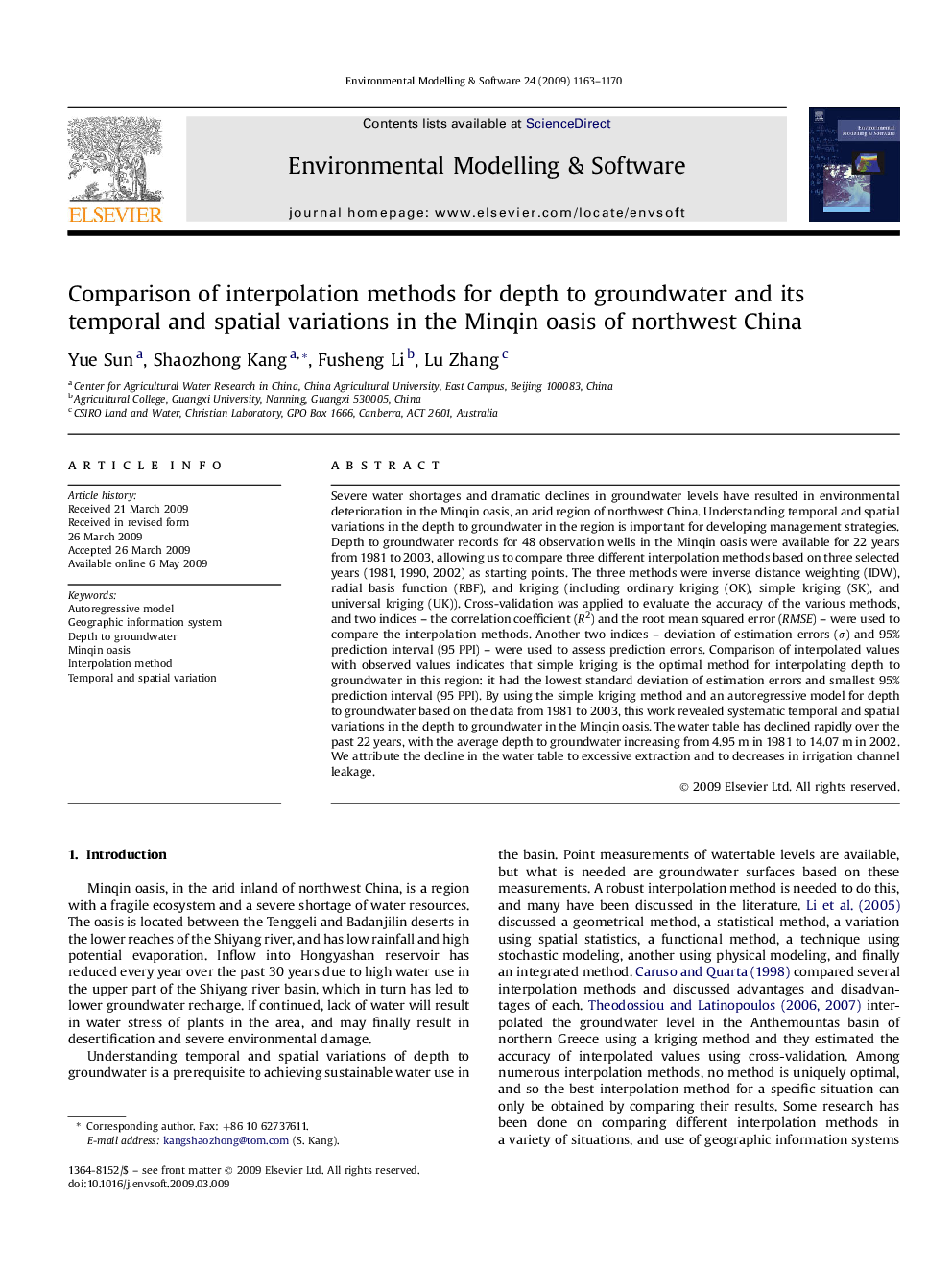| Article ID | Journal | Published Year | Pages | File Type |
|---|---|---|---|---|
| 570015 | Environmental Modelling & Software | 2009 | 8 Pages |
Severe water shortages and dramatic declines in groundwater levels have resulted in environmental deterioration in the Minqin oasis, an arid region of northwest China. Understanding temporal and spatial variations in the depth to groundwater in the region is important for developing management strategies. Depth to groundwater records for 48 observation wells in the Minqin oasis were available for 22 years from 1981 to 2003, allowing us to compare three different interpolation methods based on three selected years (1981, 1990, 2002) as starting points. The three methods were inverse distance weighting (IDW), radial basis function (RBF), and kriging (including ordinary kriging (OK), simple kriging (SK), and universal kriging (UK)). Cross-validation was applied to evaluate the accuracy of the various methods, and two indices – the correlation coefficient (R2) and the root mean squared error (RMSE) – were used to compare the interpolation methods. Another two indices – deviation of estimation errors (σ) and 95% prediction interval (95 PPI) – were used to assess prediction errors. Comparison of interpolated values with observed values indicates that simple kriging is the optimal method for interpolating depth to groundwater in this region: it had the lowest standard deviation of estimation errors and smallest 95% prediction interval (95 PPI). By using the simple kriging method and an autoregressive model for depth to groundwater based on the data from 1981 to 2003, this work revealed systematic temporal and spatial variations in the depth to groundwater in the Minqin oasis. The water table has declined rapidly over the past 22 years, with the average depth to groundwater increasing from 4.95 m in 1981 to 14.07 m in 2002. We attribute the decline in the water table to excessive extraction and to decreases in irrigation channel leakage.
